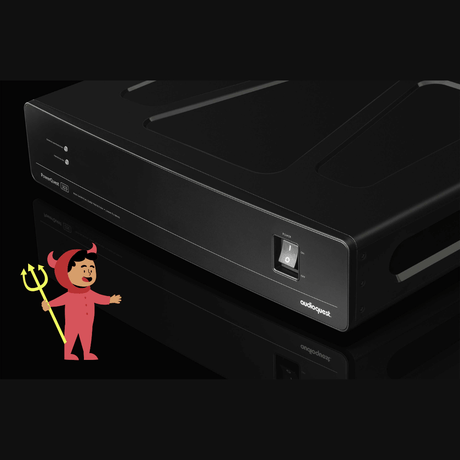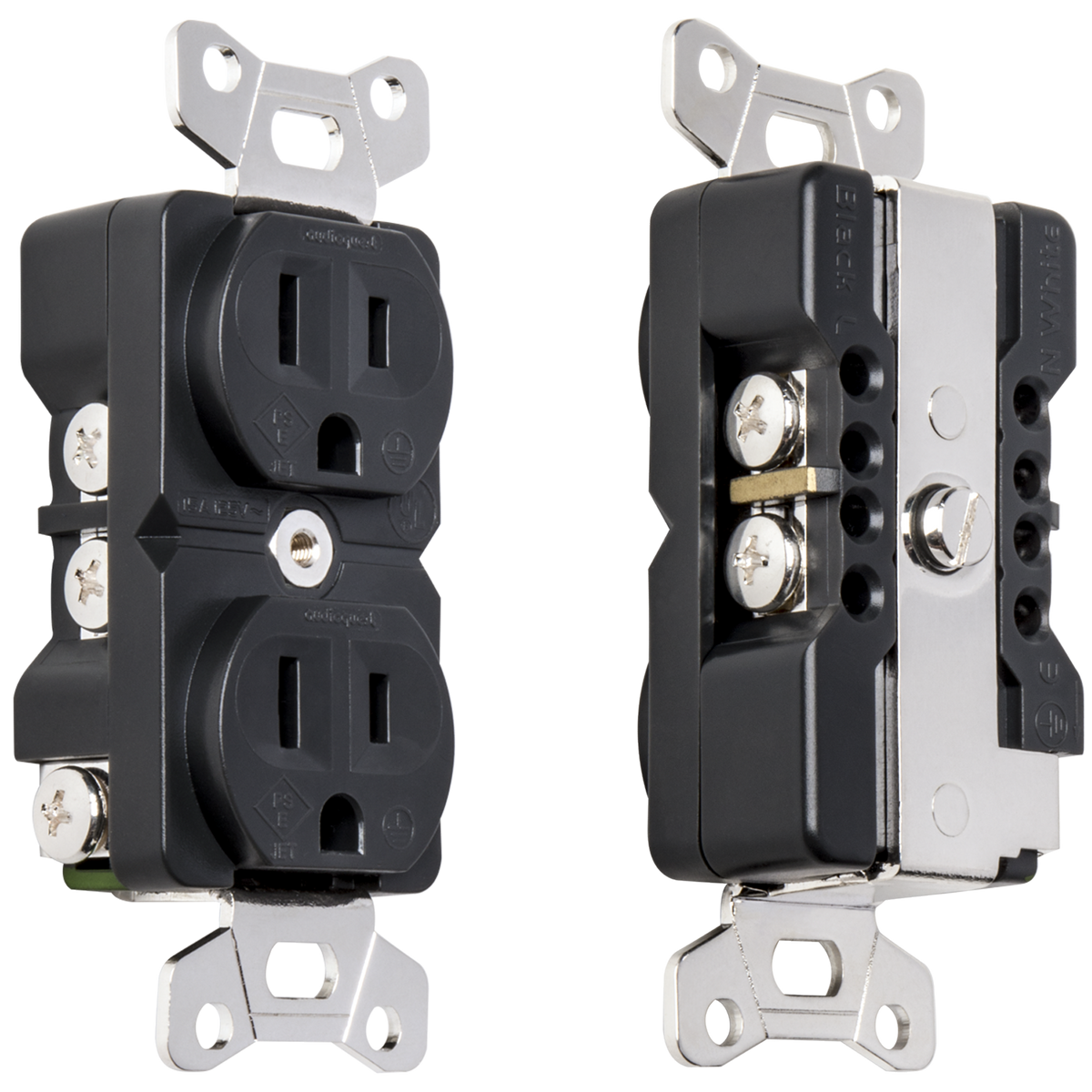
Scientist Says PowerQuest 303 is "Evil!"
Jürgen Krauss, founder of AudioReviews.org, is a scientist. What does he make of high-performance power conditioning? PURE EVIL.
Podwójne gniazdko ścienne
Często wybór pomiędzy zakończeniem kabli głośnikowych za pomocą widełek spadowych a wtykami bananowymi sprowadza się do osobistych preferencji. Jednak zgodne z normami UE izolowane zaciski stosowane w niektórych wzmacniaczach mocy często utrudniają, jeśli nie uniemożliwiają, dokręcenie widełek spadowych z dużym momentem obrotowym lub naciskiem. W takich przypadkach złącze bananowe AudioQuest jest lepszym wyborem, a może być jedynym wyborem.
AudioQuest przeprowadziło dość szerokie badanie współczesnych producentów wzmacniaczy, aby określić, czy widełki czy banany będą najbardziej odpowiednie dla danej marki i modelu wzmacniacza. Prosimy skontaktuj się z nami, podaj markę i model wzmacniacza, a my odpowiemy z optymalnym typem złącza.
W tym przypadku zazwyczaj zalecamy złącze U-Spade lub bananowe. Jednak mimo że po tej stronie kabla jest mniej wagi i nacisku (szczególnie w przypadku zestawów BiWire), ważne jest, aby zwrócić uwagę na konstrukcję zacisku. Jeśli złącze bananowe nie może być w pełni osadzone w zacisku, zalecamy jedno z naszych złączy spadowych.
To gniazdo AC jest przeznaczone do jednofazowych obwodów gałęziowych AC o napięciu od 220 do 240 V AC, z częstotliwością fali sinusoidalnej 50 lub 60 Hz. Jeśli obwód gałęziowy używa wyłącznika obwodu 15 A, odpowiednie jest zastosowanie NRG Edison 15. Dla usługi 20 A, użyj NRG Edison 20. Wyłącznik obwodu serwisowego powinien mieć ocenę 20 A z co najmniej przewodami #12 AWG lub cięższymi (o niższym numerze).
Zalecenia dotyczące dedykowanego okablowania:
AudioQuest NRG Gniazdo duplex AC Edison 15 & 20 może pomieścić przewody do #8 AWG, chociaż #10 lub #12 mogą mieć lepsze właściwości w porównaniu do przewodu #8 AWG pod względem rozpraszania zakłóceń, to znaczy kierowania zakłóceń RF z powrotem do panelu elektrycznego i uziemienia. Dzieje się tak z powodu efektu naskórkowego przy częstotliwościach radiowych, który faworyzuje cieńsze przewody, co sprawia, że redukcja zakłóceń jest bardziej efektywna przy cieńszym przewodzie. Jest to ważne rozważenie przy optymalizacji systemu z dedykowaną linią, to znaczy dyskretnym przewodem linii, neutralnym i uziemienia, który biegnie z powrotem do głównego panelu elektrycznego bez innych gniazd AC połączonych szeregowo lub łańcuchowo z lub do któregokolwiek z tych przewodów.
Im niższa rezystancja przewodu (przy użyciu cięższego przewodu-kabla), tym niższa impedancja AC obecna przy 50-60 Hz. Jest to zaleta dla każdego wzmacniacza mocy. Jednak równie prawdziwe jest, że zapewnienie optymalnego rozpraszania zakłóceń (kierowanie zakłóceń radiowych z dala od wrażliwych komponentów systemu) jest bardziej efektywne przy nieco mniejszych średnicach przewodów. Gdzie tylko możliwe, solidne rdzenie elektryczne klasy AC dadzą lepsze wyniki. Stwierdzamy, że przy instalacji dedykowanej linii AC, okablowanie #10 do #12 AWG jest najlepszym kompromisem, niezależnie od tego, czy obwód gałęziowy jest przeznaczony do pracy z 15 czy 20 A.
Dedykowana linia może nie być możliwa (ani absolutnie konieczna), szczególnie jeśli instalacja znajduje się w wynajmowanej, dzierżawionej lub tymczasowej przestrzeni. Nawet przy standardowym okablowaniu usługi 10 lub 15 A, Twój system znacznie skorzysta z instalacji gniazda duplex AC NRG Edison.
(Kliknij hotspoty, aby uzyskać szczegóły)
